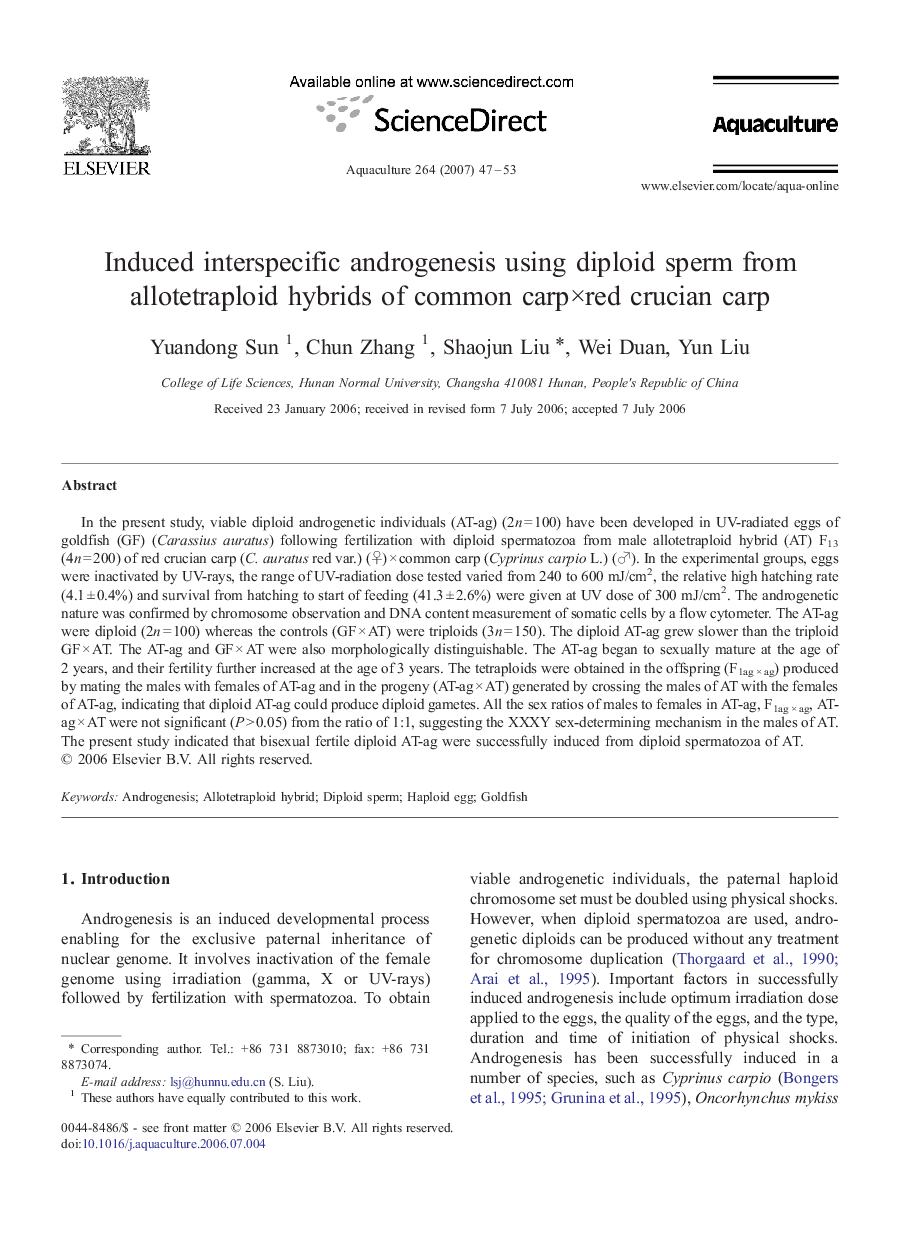| Article ID | Journal | Published Year | Pages | File Type |
|---|---|---|---|---|
| 2425361 | Aquaculture | 2007 | 7 Pages |
In the present study, viable diploid androgenetic individuals (AT-ag) (2n = 100) have been developed in UV-radiated eggs of goldfish (GF) (Carassius auratus) following fertilization with diploid spermatozoa from male allotetraploid hybrid (AT) F13 (4n = 200) of red crucian carp (C. auratus red var.) (♀) × common carp (Cyprinus carpio L.) (♂). In the experimental groups, eggs were inactivated by UV-rays, the range of UV-radiation dose tested varied from 240 to 600 mJ/cm2, the relative high hatching rate (4.1 ± 0.4%) and survival from hatching to start of feeding (41.3 ± 2.6%) were given at UV dose of 300 mJ/cm2. The androgenetic nature was confirmed by chromosome observation and DNA content measurement of somatic cells by a flow cytometer. The AT-ag were diploid (2n = 100) whereas the controls (GF × AT) were triploids (3n = 150). The diploid AT-ag grew slower than the triploid GF × AT. The AT-ag and GF × AT were also morphologically distinguishable. The AT-ag began to sexually mature at the age of 2 years, and their fertility further increased at the age of 3 years. The tetraploids were obtained in the offspring (F1ag × ag) produced by mating the males with females of AT-ag and in the progeny (AT-ag × AT) generated by crossing the males of AT with the females of AT-ag, indicating that diploid AT-ag could produce diploid gametes. All the sex ratios of males to females in AT-ag, F1ag × ag, AT-ag × AT were not significant (P > 0.05) from the ratio of 1:1, suggesting the XXXY sex-determining mechanism in the males of AT. The present study indicated that bisexual fertile diploid AT-ag were successfully induced from diploid spermatozoa of AT.
